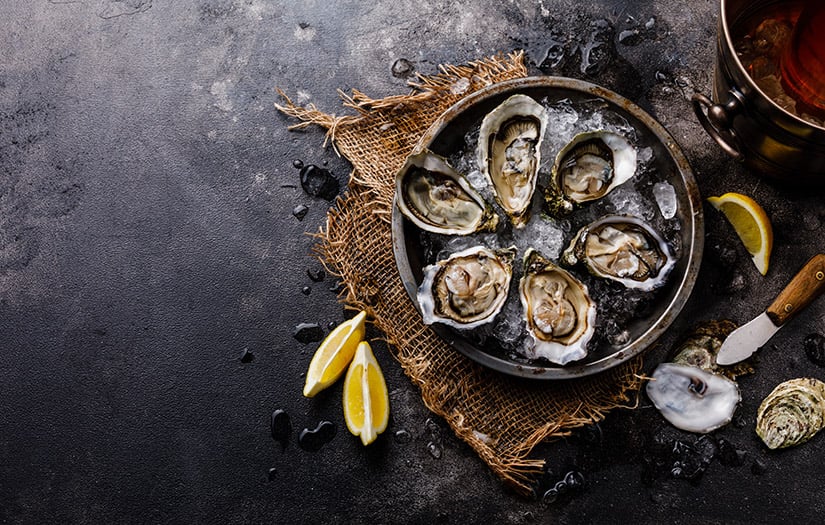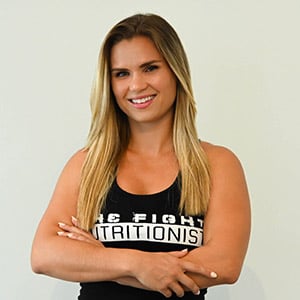Iron is a mineral you often hear professionals advocating to get more of to avoid the risk of deficiency. But why? Why is this mineral so important and why should you make sure you’re getting adequate amounts in your diet?
This article aims to answer all those questions, give you a full lesson on iron, and a list of iron-rich foods to start including in your diet.
For an overview of why this essential mineral is to important, follow the link to the NASM micronutrient guide.
What is iron & why is iron important?
Iron is a mineral found in many foods that is an essential part of hemoglobin. Hemoglobin is a protein found in red blood cells that carries oxygen throughout the body. Iron is also needed for DNA synthesis, physical growth, neurological development, and synthesis of some hormones.
Most of the body’s iron stores are located within hemoglobin & myoglobin, with smaller amounts stored in the liver, spleen, and bone marrow.
There are two main types of iron: heme & non-heme iron. Heme iron is found in meats, poultry, and fish. Heme iron is the most bioavailable form of iron, and its absorption is least affected by dietary processes. Non-heme iron is mainly obtained from cereals, legumes, fruits, and vegetables. Compared to heme iron, non-heme iron is absorbed much less efficiently. Various nutritional components of plants such as phytic acids and polyphenols can often block the absorption of iron.
According to the Food & Nutrition Board at the Institute of Medicine, the Recommended Dietary Allowance (RDA) for iron in adults 19-50 years is 8mg/day for men and 18mg/day for women. Pregnancy, various disease states or illnesses, vegan/vegetarian diets, or high levels of physical activity can increase these daily needs.
Read also: Iron: An Essential Mineral
15 foods high in iron
So, what are the top 15 sources of iron that you can include in your diet right now?
- Oysters (6.1mg per 6 medium oysters)
- Mussels (5.7mg per 3oz)
- Sardines (2.48mg per 3oz)
- Lean Beaf (2.2mg per 3oz)
- Chicken (1.3 mg per 3.5oz)
- Ham (1.3 mg per 3oz)
- Turkey (0.9g per 3oz)
- Tofu (6.6 mg per 1/2 c.)
- Bean & Lentils (6.25mg - 7.55g per cup)
- Fortified Breakfast Cereals (3.4mg per 1 cup)
- Spinach (2.7mg per 3.5oz)
- Baked Potatoes (1.9 mg per 1 medium potato)
- Cashews (1.9mg per 1oz)
- Broccoli (1mg per 1 cup)
- Pumpkin Seeds (0.9mg per 1oz)
1. Oysters (6.1mg per 6 medium oysters)
Oysters are packed with iron! So, if you’re a seafood fan, then you’re in luck. If you’re low on Vitamin D, then you’re hitting the jackpot because oysters are also a rich source of Vitamin D.
2. Mussels (5.7mg per 3oz)
Like oysters, mussels are also loaded with iron. Stocking up on shellfish at the market can help you meet your daily needs.
3. Sardines (2.48mg per 3oz)
Sardines are not only a great source of iron, but calcium, vitamin d, and vitamin b12 as well! Add them to your favorite salad for an extra source of nutrients.
4. Lean Beef (2.2mg per 3oz)
Beef is a great source of protein, vitamins B6, B12, B2, and iron! 3oz of beef contains 2.2mg of iron. Include a lean source of beef at lunch or dinner a few times a week to make sure you’re getting plenty of it in your diet.
5. Chicken (1.3 mg per 3.5oz)
Everyone loves chicken! Add this protein-packed food to any breakfast, lunch, or dinner for an added source of iron and other vitamins/minerals such as B2, biotin, B6, B12, potassium, magnesium, and zinc.
6. Ham (1.3 mg per 3oz)
Not only are you getting 1.3mg of iron in ham, but you’re also getting 18g of protein!
7. Turkey (0.9g per 3oz)
The list of iron-rich foods continues with turkey. Thanksgiving is around the corner, so know that your dinner will have a rich amount of iron in it!
8. Tofu (6.6 mg per 1/2 c.)
Vegans/vegetarians can be at risk for iron deficiency. Luckily, this plant-based, protein-packed food is full of iron to help meet your daily needs.
9. Beans & Lentils (6.25mg - 7.55g per cup)
Some beans you can easily add to your salads or as a side dish to increase iron intake include chickpeas which have 6.25mg iron per 1/2 cup, kidney beans which have 7.55g iron per 1/2 cup, and black beans which contain 6.5mg of iron per 1/2 cup.
10. Fortified breakfast cereals (3.4mg per 1 cup)
Fortified foods are when micronutrients are added to foods because many nutrients are lost in the original processing. This doesn’t mean the food is always overly processed or unhealthy fortified cereals are packed with iron, fiber, b-vitamins, and folic acid.
11. Spinach (2.7mg per 3.5oz)
Iron is found in green leafy vegetables. A big bowl of spinach salad will not only increase your iron intake but will load you up with Vitamin K, A, and C as well.
12. Baked Potatoes (1.9 mg per 1 medium potato)
Who doesn’t love adding a side of potatoes with their steak! 1 medium potato not only contains 1.9mg of iron but is packed with potassium too.
13. Cashews (1.9mg per 1oz)
Add cashews to your salad or pair them with some fruit for a midday snack to help keep you full. Cashews are also a rich source of magnesium, phosphorous, zinc, and copper.
14. Broccoli (1mg per 1 cup)
Green leafy vegetables are known to have higher concentrations of iron. Adding broccoli as a side dish, to a salad, or bowl can be an easy way to increase iron intake along with Vitamin K and fiber.
15. Pumpkin Seeds (0.9mg per 1oz)
Pumpkin seeds can easily be added to salads, bowls, and trail mix. They are loaded with phosphorous, magnesium, in addition to being a rich source of iron.
Signs of iron deficiency
Since we know iron plays an important role in growth and development, transportation of oxygen, and neurological function, inadequate intake can have some negative side effects.
Common signs of iron deficiency include lethargy, dizziness, fatigue, brittle nails, hair loss, headaches, and irritability.
Since iron is necessary for oxygen transport, low iron stores can make it hard to deliver oxygen to your lungs and other muscles so you may experience early onset fatigue during exercise or other forms of activity.
Mental fog or depressed cognitive function have also been seen in individuals with iron deficiency. Some studies have shown that low levels of this mineral can cause brain mitochondrial damage. Cognitive functions such as attention span, intelligence, and sensory perception have been most often cited as areas of impairment with iron deficiency.
More physical signs of iron deficiency are seen in the skin and nails. Brittle nails, or spoon-shaped nails, are called koilonychia. In iron-deficient individuals, there is a lack of blood flow to tissues which can cause disruptions in the proper formation of connective tissues.
Iron deficiency most commonly occurs from low intake, poor absorption, excess loss of blood, or sickness and disease states. However, deficiency is also very common in instances where there is an increased need for iron such as rapid growth, pregnancy, and menstruation. Therefore, some of the most at-risk populations are young children, women who are pregnant, and adolescent girls/women of childbearing age who have excessively heavy menstrual cycles.
Should you take iron supplements?
To prevent iron deficiency, consuming adequate amounts of iron in your diet should help prevent any issues. However, if you still feel you are falling short of meeting your daily needs should you consume a supplement?
Most iron supplements deliver close to the daily value of 18mg/day, especially if the iron supplement is designed for women. If choosing an iron supplement, ferrous iron is known to be more bioavailable than ferric iron. Also, absorption of non-heme iron is enhanced with citric acid! So, combining your iron supplement with orange juice can enhance the absorption of the mineral.
Therefore, consuming an iron supplement is safe and should be encouraged if you feel that you are struggling to meet your daily needs. However, the tolerable upper limit (UL) for iron is 45mg/day. You should consult with a doctor or health professional before ingesting large doses of iron since excess intakes are associated with gastrointestinal discomfort, constipation, vomiting, and diarrhea.
Iron is an essential mineral found in every living organism and plays a critical role in our health and well-being. Eating a well-balanced diet and including recommended amounts of various food groups should help prevent any deficiencies in this mineral.
If you are interested in a similar blog post about another vital micronutrient, try: Foods High in Fiber
References:
https://www.ncbi.nlm.nih.gov/pmc/articles/PMC4235202/
https://ods.od.nih.gov/factsheets/Iron-HealthProfessional/
https://www.ncbi.nlm.nih.gov/pmc/articles/PMC3999603/
https://www.eatright.org/health/wellness/preventing-illness/iron-deficiency

















